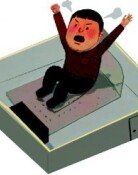Cutting-Edge Air Fighters of U.S. and Russia to Confront
Cutting-Edge Air Fighters of U.S. and Russia to Confront
Posted February. 17, 2004 22:39,
The hard core units of the United States and Russia, the F-15C and the Sukhoi-30MKI respectively, will confront each other. However, like playing a trick without claws such as shell-and-guided missiles, only a practical in-flight engagement is scheduled.
The conflicts, which are hard to have imagined in the Cold War era, commenced on February 16 at Madhya Pradesh Province in the middle part of India. The United States and India are conducting the biggest joint-training operations in history.
Neighboring countries such as China, Russia, and Pakistan are strained to the limit by this long-term joint training operation which is scheduled to continue through February 27 as an 11-day program, because the military band between the two countries will exert a great influence on this region. Some experts have assessed that this operation was designed as a part of an encirclement strategy of the United States to check the skyrocketing military force of China.
Scale and Details of Training
From the United States side, six F-15C fighters dispatched by the Alaska base, two C-5 carriers, and 140 soldiers from the Pacific Air Force command will participate in the operation. From the Indian side, most of the hard core units of India, such as the Sukhoi-30MKI multipurpose fighter made in Russia, Mig-21, 27, 29, and Mirage-2000 fighter made in France, will be mobilized to take part in this training.
Although the U.S. and India started their first joint air force training program back in 2002 in India with the U.S. dispatching only one troop carrier at that time, this operation will be practically recorded as the first joint military training campaign in which the air fighters will participate.
The air forces of the U.S. and India will implement the training operation by dividing itself into the assault and opposition side, focusing on fields such as long distance missile assault, derangement of radio wave, and missile interception. It has been known that they will lay stress on the mid-air discernment discipline and the ability of joint-operation implementation. In particular, India will aim at sinking in the mid-air blow tactics and strategies of the U.S.
First Showdown Between the Rival Air Fighters
The matter of primary concern in this training operation is the fact that Sukhoi-30MKI, which was designed by Russia in order to bring down the hard core unit of the U.S., the F-15C, will appear. The military experts praise that the Sukhoi-30MKI possesses better performance than the F-15C in the hedgehopping flight, defense of armor plate, and stealth performance.
The participation of Sukhoi-30MKI in this operation is accomplished by the pressing demand of the U.S. As this air fighter appears to be introduced by the diverse Asian countries as their hard core air force unit, the U.S. tries hard to understand the performance of Sukhoi in this operation.
According to this reason, the Indian air force and national defense ministry was, at the very beginning, opposed to revealing the performance of their major air assault unit to the Latent Enemy, the United States. India has made a contract with Russia to purchase 50 Sukhoi-30MKI and turned over 28 Sukhois so far. They planned to manufacture an additional 140 fighters in a technology importation method.
Changes of Military Strategy in Southwestern Asia
The military experts analyzed that this training operation is achieved for the strategic profits of the two countries harmonizing with each other. As the United States needs to induce India which grows in economical and military sphere alike, and India, by settling the relationship between itself and the U.S., aims at the improvement of the security state in the surrounding areas and the elevation of its international position.
On the other hand, Pakistan criticized this operation as impeding their ability of dropping the nuclear weapon on the relevant territory.
Yoo-Sung Hwang yshwang@donga.com







